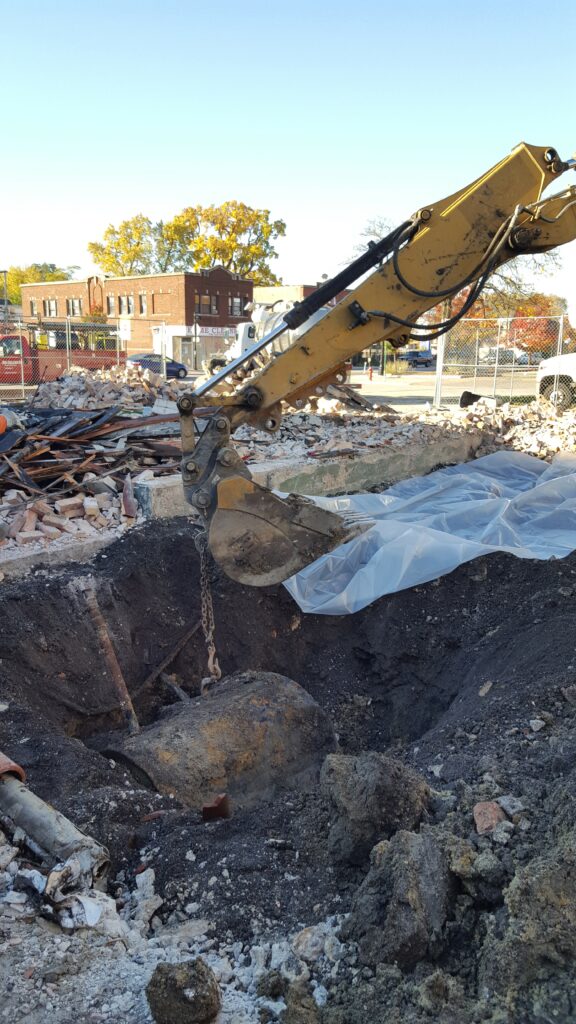Client: Syndicated Equities | Location: Chicago, IL
Due to the former wide-spread use of heating oil throughout the country (circa 1920s-1960s) and the corresponding use of USTs to store the oil, many sites today are faced with the legacy of contamination associated with leaks from these obsolete tanks. One such site, located near the lakefront in the City of Chicago, was impacted by a release of #5 heating oil from an old UST free product leaked into the basement through cracks in the foundation walls and floor of a 14-story residential building. When the release was first discovered in 1990, two separate consultants were hired by site ownership to perform corrective action at the site but were unsuccessful due to design short-comings and the viscous nature of the #5 heating oil released from the tank. Pioneer was subsequently contracted to develop and implement a new strategy to remove the oil from beneath the building.
Pioneer began solving this problem by designing and performing a subsurface investigation beneath the high-rise building to delineate the extent of free-phase #5 heating oil associated with the out-of-service 15,600 gallon UST. Once the extent had been defined, an aquifer pump test was performed to determine the hydrogeologic characteristics of the subsurface environment to aid in the development of appropriate remedial strategies for the site. Since the main problem associated with recovering the oil was its highly viscous nature, Pioneer designed, constructed and operated a benchscale model to economically determine the technical feasibility of using heat and/or surfactants to recover the viscous #5 heating oil from beneath the structure. After evaluating the results of the benchscale modeling, Pioneer performed an on-site pilot test to determine the site-specific parameters needed to install a full-scale surfactant-enhanced free product recovery system at the site. Pioneer subsequently designed, constructed, and then performed operations and maintenance of a full-scale surfactant-enhanced product recovery system at the site. The system proved successful and an estimated 3,000 gallons of #5 heating oil were recovered from below the site. After monitoring for potential “rebound” affects, sufficient free product removal was confirmed and the site received closure from the state agency.
As a point of interest, during the operation of the system, Pioneer entertained 12 IEPA representatives at the site who were interested in personally inspecting the site due to its innovative and effective free product recovery strategy. Pioneer also prepared the necessary documentation to obtain reimbursement for the client from the State UST fund for eligible investigation and corrective action costs incurred at the site.


